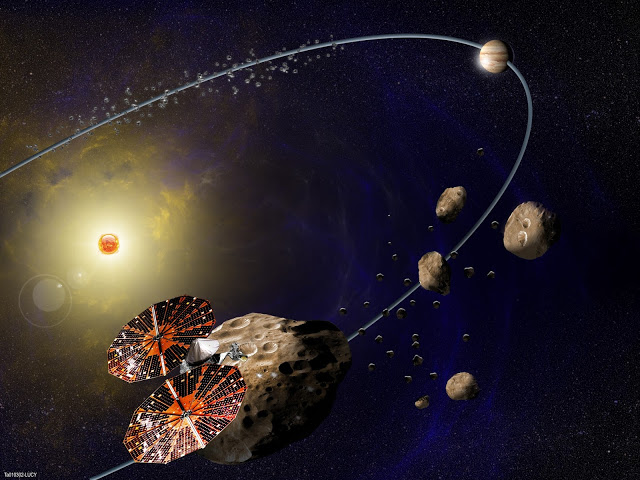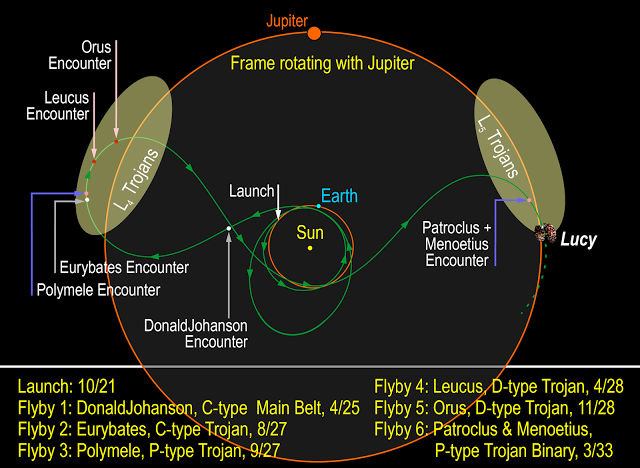

| Online: | |
| Visits: | |
| Stories: |

| Story Views | |
| Now: | |
| Last Hour: | |
| Last 24 Hours: | |
| Total: | |
Small, Primitive Worlds Orbiting Near Jupiter To Provide Clues About Origins of The Solar System
“This is a unique opportunity,” said Dr. Harold F. Levison, a program director and chief scientist in SwRI’s Boulder office and the principal investigator of the mission. “Because the Trojans are remnants of the primordial material that formed the outer planets, they hold vital clues to deciphering the history of the solar system. Lucy, like the human fossil for which it is named, will revolutionize the understanding of our origins.”
In this artist’s concept (not to scale), the Lucy spacecraft is flying by Eurybates, one of the six diverse and scientifically important Trojans to be studied
“One of the most puzzling characteristics of the Trojans is that they are very different from one another,” said Levison. “This diversity was caused by the evolution of the outer planets and, as such, can be used to detangle their history.” To realize the full scientific potential of the Trojans requires studying all types.
“Understanding the causes of the differences between the Trojans will provide unique and critical knowledge of planetary origins, the source of volatiles and organics on the terrestrial planets, and the evolution of the planetary system as a whole,” said Dr. Catherine Olkin, a planetary scientist in SwRI’s Space Science and Engineering Division and the mission’s deputy principal investigator.
This illustration shows the trajectory of NASA’s Lucy mission, which is led by Southwest Research Institute. The Lucy spacecraft will launch in 2021 and initially fly by the main belt asteroid DonaldJohanson, named for the paleoanthropologist who discovered the Lucy fossil. Lucy will then go on to study six diverse and scientifically important Trojans – Eurybates, Polymele, Leucus, Orus, and the binary Trojans Patroclus and Menoetius – from August 2027 to March 2033.
Source:




